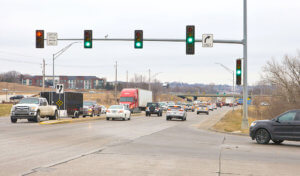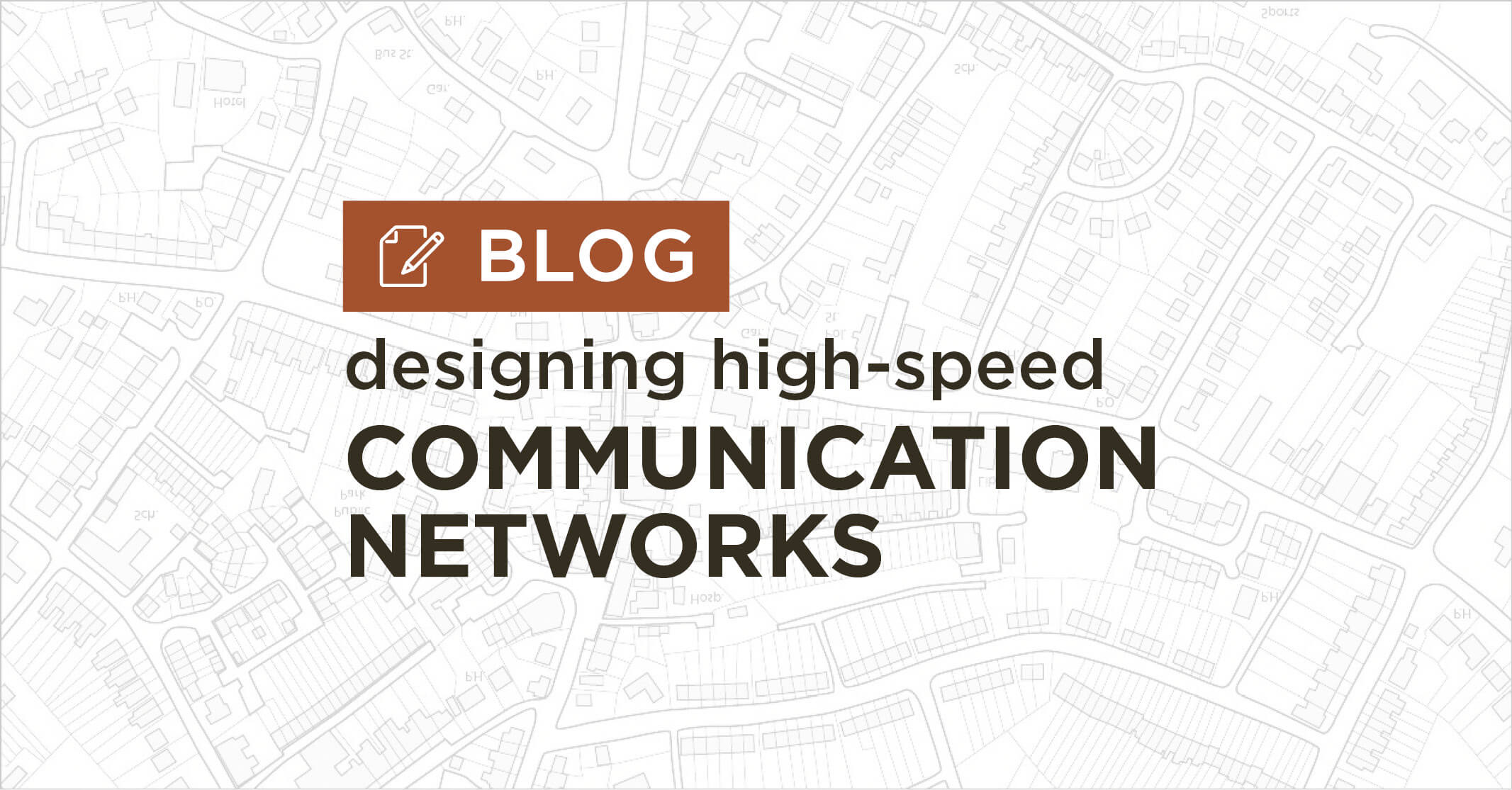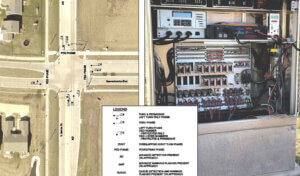Interconnected Infrastructure Creates Greater Efficiencies
Establishing a high-speed communications network in a small municipality may seem like a monumental task for many community leaders. However, in today’s world of instant communication, the need for these ultra-fast networks is quickly becoming a critical necessity. The ability to link government buildings, traffic signals, and public utility operations, often with fiber optic technology, can be the difference between a community stagnating or flourishing.
Grimes, Iowa in the northwest corner of the Des Moines metropolitan area is a prime example of a community that recognized the need for an improved communications network. In 2012, Grimes had a population of around 9,000 people with relatively minimal city staff. Fast forward 10 years and the community has more than doubled its population and experienced a significant increase of in-house staffing, resulting in the need for faster and higher-capacity bandwidth communications.
Around the time this population surge began, city leaders in Grimes realized they needed to improve traffic flow between the nine existing traffic signals under the city’s control, which would entail establishing a communication system to connect each intersection. At the same time, the city’s five public buildings each had separate, private internet connections with an isolated IT network within each building. This led to complications in sharing data between city departments and physical locations and hindered their ability to create a city-wide backup system to minimize data security concerns.
While the city’s needs were obvious, city leaders knew they needed professional assistance to guide this complex process. They partnered with the planning and engineering team from Snyder & Associates to lay the groundwork and help implement a system that would address all their current and future communication network needs.
Establishing a Communications Network Master Plan: Grimes, Iowa Case Study
As with any new project, the question is often, “where to begin?” Whether expanding an existing system or designing a new communications network from scratch, the process starts with the creation of a master plan. A thorough master plan needs to contain the following:
- Setting Clear Connection Goals. This initial stage should include the assessment of all buildings, facilities, or equipment that would benefit from a communications network connection. This could also encompass other equipment like traffic signals, water towers, pump stations, or anything that could be remotely monitored. For the City of Grimes, it was determined the initial goals should be to connect buildings and the traffic signal network with the ability to expand with further population growth.
- Review Existing IT Infrastructure. This step should include the review of existing building IT infrastructure and layouts and any exterior infrastructure that could be utilized for network connections. A review of as-built traffic signal construction plans or previous projects that could have installed conduits is also beneficial. In the case of the City of Grimes, this process was used to identify pathways within buildings, connections to traffic signal cabinets, and available conduits along street and highway corridors that could potentially be used to house fiber cable.
- Investigate Public Agency Partnerships. Partnering with other public agencies to create a joint network could result in serious cost and/or resource savings. Potential public agencies include local/regional school districts, county governments, and state agencies (including departments of transportation). These public agencies may have a similar need to install IT infrastructure along shared paths. Joining forces could reduce potential funding needs for all groups.
The City of Grimes reached out to local agencies and found a partner with the Iowa Department of Transportation (DOT). The Iowa DOT already owned fiber optic cable along one of the corridors with fibers designated to share with Grimes. This relieved the city from installing additional cable along those segments. Further, this process helped identify a fiber optic cable path the municipality could share with the Iowa DOT for additional IT equipment that would be a benefit to both agencies.
- Determining the Network Transmission Method. With goals established and infrastructure inventoried, now is the time to determine what additional equipment is needed to complete the network. Here, several options are available. The installation of fiber optic cable between buildings and equipment provides the fastest and most reliable connection. However, fiber optic cable requires either overhead installation or subsurface installation among all other underground utilities. While slower than fiber optic, a less-expensive copper cable could be utilized to a limited extent. It has similar installation obstacles to fiber but could be utilized if funding is not adequate. Alternatively, a wireless radio network could be installed more quickly and at a lower cost. The wireless option, however, is less reliable than fiber optic cable. Each method has positives and negatives that need to be weighed in the selection process.
Grimes leaders opted to move forward with fiber optic cable as the primary connection, with wireless radio communication used for isolated traffic signals. The city had a portion of the conduit already installed and was able to utilize a shared fiber optic cable provided by the Iowa DOT.
- Determine Costs and Implementation Strategy. Costs for installation can be high. Establishing an implementation strategy that best meets funding availability will provide the best chance for success. With their estimated costs determined, the City of Grimes’ master plan was carefully organized to prioritize the necessary infrastructure to create the mandatory connections, with further budgetary measures for future connections.
Locating Funding Opportunities & Designing the Network

Our professionals have worked with numerous communities on fiber optic connectivity projects, including the above Clive & Urbandale, Iowa intersection addressing the need for an ASCT system.
With a master plan complete, the next task is to determine funding opportunities. Partnering with other agencies is perhaps one of the best ways to uncover additional funding sources beyond local agency funding. Additionally, there may be grant programs at the state or federal level specifically tailored for communications enhancement projects. Since the City of Grimes was including communication to the traffic signal network, the city was able to apply for Congestion Mitigation and Air Quality (CMAQ) funding to coordinate traffic signals. In Iowa, CMAQ funding is available under the Iowa Clean Air Attainment Program (ICAAP). Qualifying for these funds allowed Grimes to use federal aid to cover nearly 80% of the project costs.
Guided by the master plan and their vast fiber-optic network experience, the Snyder & Associates team set about designing the communication network for the city. The team created detailed construction plans, provided the details for adding infrastructure, entering buildings, accessing equipment, and detailing the unique splicing requirements to provide the necessary connectivity. These meticulous plans are necessary to aid the contractor during construction. Speaking of contractors, the use of specific grant programs may come with additional stipulations, such as the requirement to use a specific bidding method or provide detailed documentation during construction. The Snyder & Associates team assisted the city with all facets of the project from funding applications and designs through the construction process.
Also, depending on the funding source, the time needed to complete a communication project, even for a small community, could be two years or more. Once completed, the system will need to be monitored and maintained to make sure it remains fully operational. The City of Grimes decided during the master plan process to split the full communication system into two separate projects. The first project (which included the master planning process) lasted approximately 2.5 years from start to finish and connected the primary buildings and all existing traffic signals. The second project (currently under construction) connects the remaining buildings, as well as the additional traffic signals constructed after the completion of the first project. The second project is anticipated to take a similar duration as the first.
For a small community on the doorstep of growth, implementing a comprehensive communication network can seem like a daunting task. When done right and with professional guidance, however, a community will have full control over its IT network, fast and reliable connectivity to all public facilities and equipment, and can limit their reliance on outside utilities for multiple connections and avoid monthly connection charges. Like the City of Grimes has experienced, upgrading to a cutting-edge fiber-optic system will provide the connectivity they need to adapt to a rapidly changing, interconnected world.

